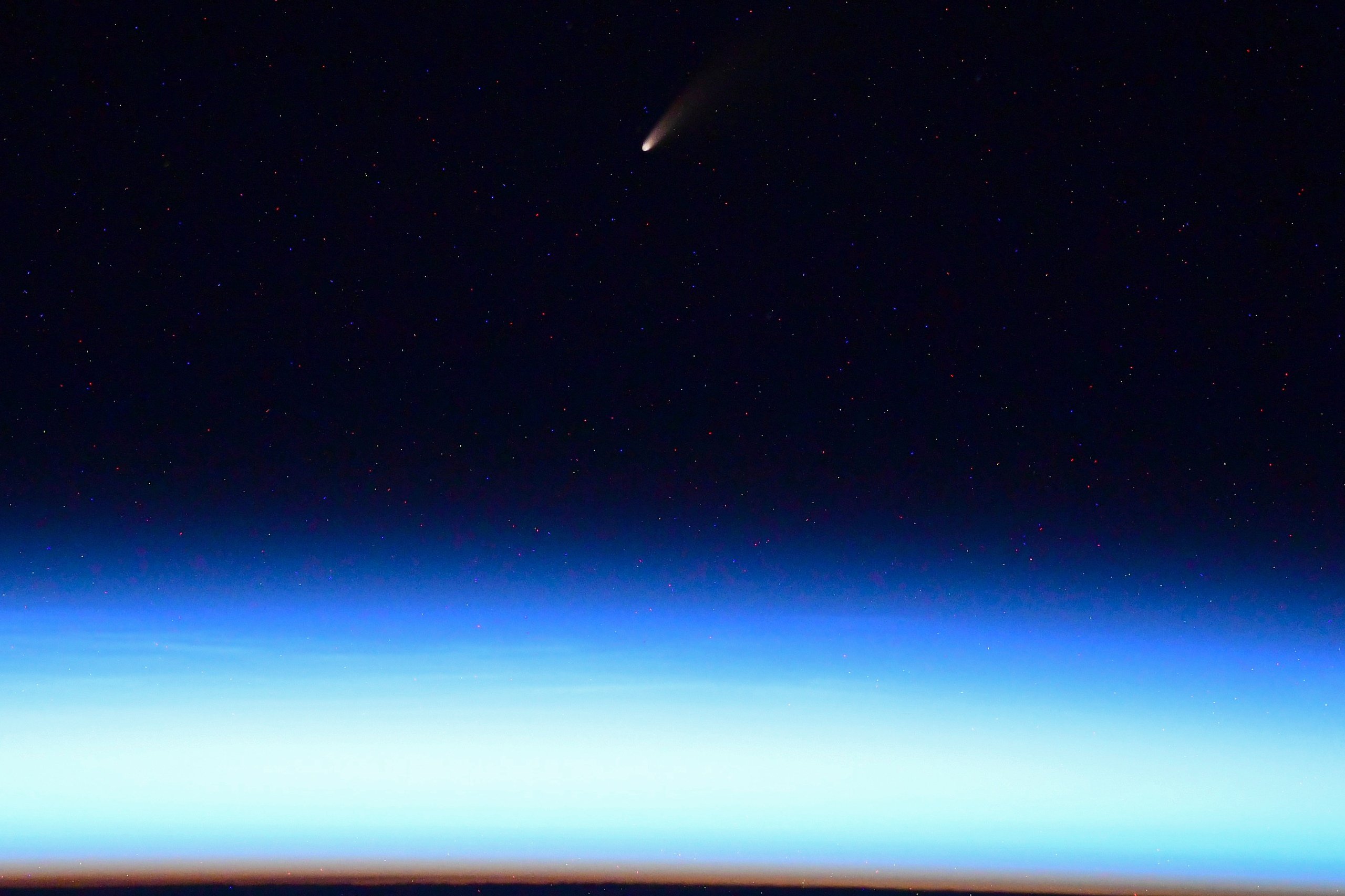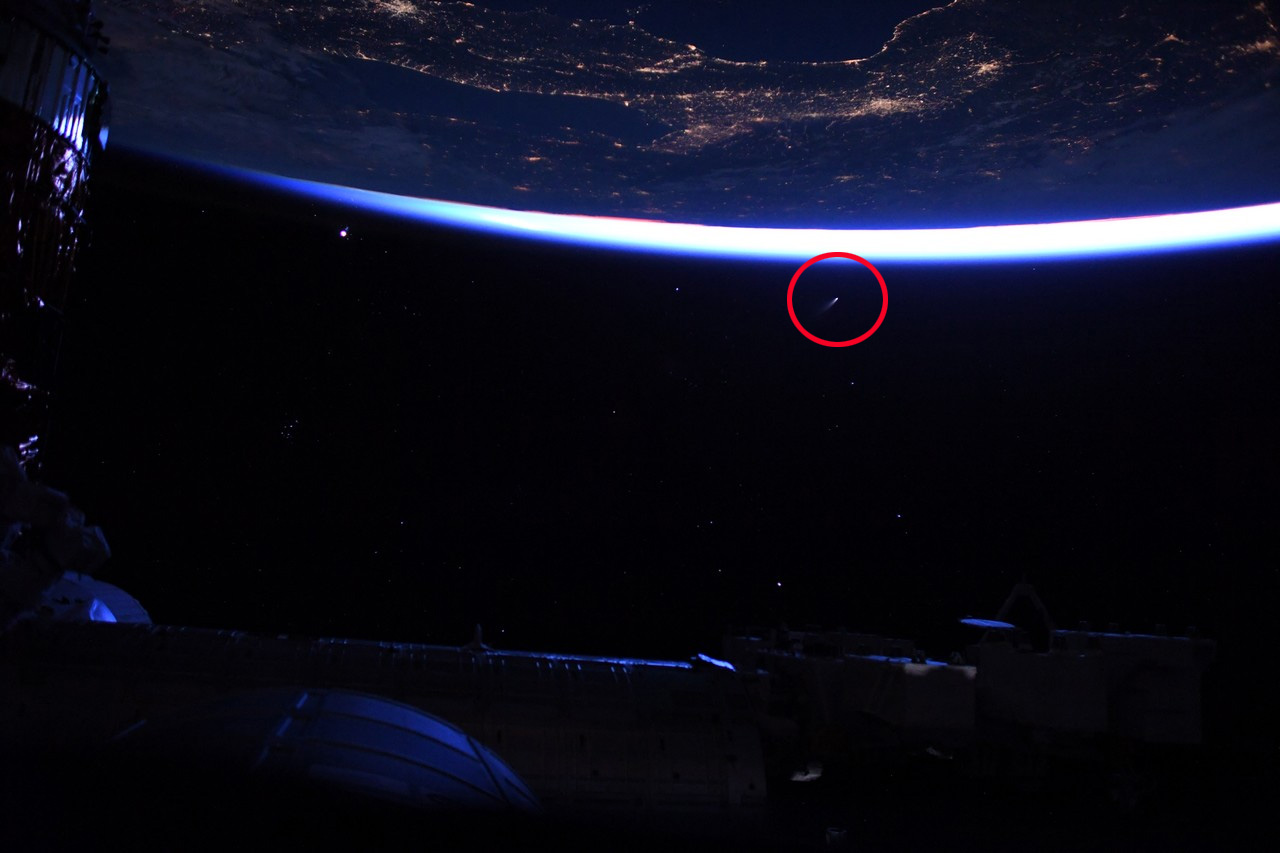Comet NEOWISE shines in stunning photos from the International Space Station
Astronauts caught a stunning natural light show this weekend from a comet that has been dazzling skywatchers on Earth as well.
That streaker, called Comet NEOWISE or C/2020 F3, first came on the scene at the end of March. At that point, the icy lump was quite faint in our skies, and astronomers weren't sure that would change. But as time has passed, the comet has brightened immensely, tantalizing skywatchers even after they were disappointed by two other recent comets that faded away.
"Last night's fireworks, for real. Because Science," NASA astronaut Bob Behnken said in a tweet posted from the International Space Station on Sunday (July 5), the day after Americans celebrated the Fourth of July with artificial firework displays.
Related: Comet NEOWISE could give skywatchers a dazzling show this month. Here's what to know.

One of Behnken's colleagues on board the orbiting laboratory, Russian cosmonaut Ivan Vagner, also photographed the comet, with its tail in stark brightness against the blackness of space seen over the glowing blue atmosphere of Earth.
Vagner commented particularly on Comet NEOWISE's stunning tail, the distinctive feature of comets compared to their rockier counterparts, asteroids. A comet's tail is formed by the sun's radiation pushing dust out of the fuzzy blob surrounding the comet as its ice warms and turns to gas.

Last night's fireworks, for real. Because Science. #NEOWISE #comet pic.twitter.com/IKcJ1wLFAlJuly 5, 2020
Right now, Comet NEOWISE requires a good pair of binoculars to catch sight of in most locations, and skywatchers aren't sure yet whether the icy hunk will become so stunningly bright that it and its tail will be easily visible to the unaided eye. But the comet should dazzle throughout the month of July surrounding its closest approach to Earth, which occurs on July 22.
Get the Space.com Newsletter
Breaking space news, the latest updates on rocket launches, skywatching events and more!
Both Vagner and Behnken will remain in orbit long enough to watch that close approach from space. Behnken, who arrived aboard the first crewed SpaceX Crew Dragon on May 31, is scheduled to return to Earth with his NASA colleague Doug Hurley in early August. Vagner and two other astronauts will remain in orbit until October.
Email Meghan Bartels at mbartels@space.com or follow her on Twitter @meghanbartels. Follow us on Twitter @Spacedotcom and on Facebook.
Join our Space Forums to keep talking space on the latest missions, night sky and more! And if you have a news tip, correction or comment, let us know at: community@space.com.

Meghan is a senior writer at Space.com and has more than five years' experience as a science journalist based in New York City. She joined Space.com in July 2018, with previous writing published in outlets including Newsweek and Audubon. Meghan earned an MA in science journalism from New York University and a BA in classics from Georgetown University, and in her free time she enjoys reading and visiting museums. Follow her on Twitter at @meghanbartels.









